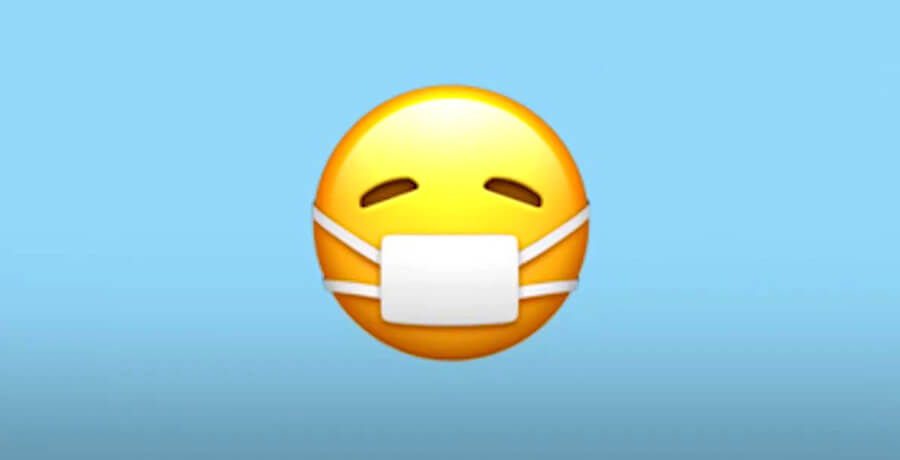Brand Archetypes And How To Make Them
You’ve probably heard and read about the terms buyer persona, target audience, and ideal customer. Today we’ll be talking about the brand archetypes. Have you heard of them?
It’s the foundation of your brand personality. Why is it important?
Your customer loyalty, brand equity, market share, and sales depend on it.
Archetypes have been in use for as long as storytelling has existed. Many researchers believe they’re effective in communicating a message because they speak to a person’s core.
How do they do it? What even are brand archetypes? What is the ideal archetype? Let’s get to it and find out!
What Is Brand Archetype?
A brand archetype is the personification of a business or an organization with characteristics and attitudes that are typical of an identifiable personality type.
In other words, it is a character that a brand assumes itself to be when interacting with others or presenting itself anywhere.
For example, a brand that aims to be the savior of their customers and audiences might want to appear like a hero.
And to give off the impression of a hero, the business must form the archetype of a hero, and consistently behave like it.

To successfully pull off a brand personality that resonates with your target audiences, you have to form a distinctly recognizable brand archetype.
That means you don’t just come up with a character and call it an archetype. The core of your archetype has to align with the needs, emotions, and cravings of your targeted groups.
In other words, the character of your brand personality can vary but the base remains the same. A better representation of basic archetypes is in the Brand Archetype Wheel.
The Brand Archetype Wheel
Four primitive needs of humans are a result of our biological, geographical, and communal evolution. No, we aren’t talking about the physical ones.

The four basic needs of any human being are spirituality, legacy, connection, and structure.
They’ve been there since the beginning of civilization, and perhaps even before that. These four basic needs give rise to twelve distinct characteristics – each unique to one archetype.
That forms twelve different archetypes. Each of these archetypes speaks to a strong desire, emotion, or value of a person.
An important read for you: How to Name Your Brand – an Essential Brand Naming Checklist
12 Brand Archetypes
These twelve brand archetypes are characters that have been used repeatedly throughout history in stories and legends way before branding was anything more than a mark of identity.

Later when marketing began taking over consumer minds and influencing buyer intent, storytelling spread like wildfire among marketers as a component of advertisement.
With that, these archetypes were introduced to branding, and brands became more than just a mark of possession or identity.
They became characters that resonated with customers on a deeper level than just features and products. For some, a brand was a status symbol, for others, a representation of their ideals.
So what are the twelve universal characters that never fail to give any brand a human identity? Here they are!
1. Innocent
The Innocent archetype represents a goodie-two-shoes, pure, and happy personality. The moral values it carries have more to do with unspoiled beauty and everlasting innocence than any other virtue.

This archetype carries a bit of shyness and avoidance of everything that falls into gray area or puts the brand image in a questionable position.
The innocent plays it safe, and mimics childlike cuteness, or follows cultural trends that are associated with being reverent or pure. This archetype is partly spiritual, but it longs for safety.
One famous example of an innocent brand archetype is Dove. This brand associates itself with peace, pure forms of beauty, and the color white.
Unlike most beauty and cosmetic industries, the entire focus of Dove’s marketing campaigns and advertising is to make people feel good in their own skin.
That ethical part of their branding can easily be associated with their innocence, and purity, giving them a substantial or authentic image in the market.
2. Everyman
Everyman is a regular guy who seeks connection with others around them. This archetype tends to want to blend in with others. They don’t appear to be out of the ordinary.

The everyman is humble, hardworking, down to earth, and a people pleaser with a tendency to stay invisible. That makes it tricky for a brand to pull off this archetype since they want to get prominent.
One thing the everyman craves is the sense of belonging, and it explains the majority of its behaviors.
Everyman archetype – when done right – can target masses that fall in the average or mediocre category of people.
One good example of the Everyman archetype is Wrangler. This brand sells jeans that cater to the everyday needs of common hardworking people, and that’s what they represent themselves as in their ads.
3. Hero
A hero is someone who is on a mission. This archetype is ambitious, courageous, devoted, and energetic. They have massive goals, and they thrive on motivation.

The core desire at play is to leave a legacy. A hero wants to leave an impression on the generations to come, and most of the time, they want their work to be remembered in history.
To enact this archetype, a brand has to vibe with its audience, make its achievements prominent, and announce the impact of its actions to the audience from time to time.
It might help if the brand takes bold measures to stand up for the causes their target audience supports once in a while, and save the day every so often by publicly helping someone in hot water.
Keeping current dynamics in mind, CSR initiatives of your brand should revolve around leaving a legacy or saving the day for people that are closely related to your target audience.
Common examples of Hero brands are Nike and Red Cross. Nike serves as a motivation for its athletic and sports enthusiast audience.
Red Cross revolves around saving lives, nurturing respect among humans, and many philanthropic aims. An authentic Hero brand I must say.
4. Outlaw
An outlaw is all about rebellion and freedom. The punk culture suits this brand archetype with disruptively deviant designs.
An outlaw or a rebel is characterized by hatred for rules, order, system, and control. A rebel’s motto is “Rules are meant to be broken”.
At the center of the heart, a rebel’s desire is the same as that of the Hero – to leave a legacy. And outlaws do that by introducing chaos in the current system. The change they cause is their legacy.

We all come across this personality type quite frequently in our social interactions, and they are the ones this brand archetype represents.
As an outlaw, your brand should be savage, disruptive, rowdy, defiant, and irrepressible. All of it should show in your designs, tone, interaction with others, and campaigns.
Harley Davidson does a great job of pulling it off in their marketing strategies. Some of their ads are targeted towards people who hate urbanization of earning methods and the corporate trap of a lifestyle.
It advertises bikes to people who would rather take a road trip all by themselves than sit in a cubicle complying with the repetitive monotonous orders.
5. Explorer
In case you were wondering, no Dora is not who we are talking about. Explorer is the comparatively spiritual archetype.
They want to explore everything, and their pursuit of knowledge is what sets them apart from others.
Explorers are curious by nature, and they often love traveling, finding answers, or digging through heaps of information to find the missing piece of a puzzle.

There is one major trait explorers and outlaws have in common. They both love freedom and would do anything to promote it.
What sets them apart is the drive. While outlaws like to mess with the status quo to cause change and leave a legacy, explorers like to discover new things.
Anything that limits the freedom of an explorer keeps them from a plethora of possibilities and discoveries. And they don’t like that idea.
The explorer archetype is great if your brand seeks to target curiosity, longing for adventure, and wanderlust.
Some of the great examples of explorer brand archetypes are National Geographic, NASA, and SpaceX.
6. Creator
The creator’s sole motivation is to innovate, build, and invent things. This archetype represents Artists, Builders, Engineers, Entrepreneurs, and creative geniuses.

The statement might sound contrary to popular belief, but creators have a desire to provide structure.
A lot of us assume creative people to be messy and all over the place.
Well, that is true for many cases, but the desire to provide structure doesn’t mean a creator is inherently organized or the process they go through is orderly.
What this implies is that a creator makes structures out of resources presented to them. So the result is always a new, functional, or discernible pattern of things you never thought of.
As a creator brand archetype, you must support and encourage innovation, introduce genius and creative updates every once in a while, and engage the audience in such activities.
Some of the common examples of creator brand archetypes are Adobe, Sony, and Lego. All have one thing in common; they stimulate your mind through creativity.
7. Ruler
A ruler is someone the outlaw might hate. The ruler tends to be controlling, possessive, aristocratic, exclusionary, and authoritative.
Even though many of us don’t like such personalities, it is not all negative. Many of us need those authoritative figures to look up to in times when we know nothing.
A ruler ensures structure in society.

A ruler maintains control, structure, and discipline. They can’t stand mischief. Their desire to govern and defend their authority is what makes them different.
A ruler might not like brands that are for everyone. They love exclusivity and protocol. The ruler brand archetype embodies elitism, structure, and luxury.
As a ruler brand archetype, you will not only have to promote control and authority, but demonstrate it by becoming a leading brand in a certain niche, yet cater to a limited number of people from the noble class.
Two great examples of the ruler brand archetype are Rolex, and Rolls Royce. Both cater to a very specific rich niche that can afford them.
Another example of a ruler brand is Microsoft as it offers structure, organization, and control. Mercedes Benz is based on a ruler archetype too, and owning its products is a status symbol.
8. Magician
A magician desires power at heart, and that desire stems from the wish to leave a legacy. Magicians believe in miracles, luck, dreams, and impossible.

The magician archetype is intuitive and hopeful. Their belief in the impossible makes them pursue their interests for longer than an average nonmagician.
To develop this brand archetype, you will have to engage with dreamers and encourage them to use their imagination.
That coupled with the motivation to transform your reality into your dream makes the perfect concoction to give magical vibes. At the core, it breeds innovation.
The perfect example of a magician archetype in action is none other than Disney. Another example is TEDX, where people share their crazy journeys, success stories, odd but possible ideas, and more.
9. Lover
The lover revolves around romance most of the time, and it harbors the youthful feel that is often called the prime of one’s life. This archetype offers the intimacy we all crave.

Unlike humans, the lover brand archetype never ages in terms of looks. It only changes in style overtime to keep up with the trends.
This brand archetype is based on beauty, attraction, passion in some cases, and the irresistible pull of an inviting look, or the depiction of the aspects of a relationship everyone is so infatuated with.
You will often come across different kinds of lover brand archetypes in the beauty and cosmetic industry. It is often found in perfume commercials, beauty product packaging, and even cars.
If you want to adopt the lover archetype for your brand, you will have to use colors your audience associates with romance, intimacy, or love in general.
Your archetype should have all the traits your target audience is attracted to or finds fascinating.
For example, women are often impressed by a completely different set of attributes of a lover’s personality compared to men.
And different groups of people like different types of lovers. Some love a soft compassionate vibe for a lover, others might want a bold, adventurous type of theme associated with a lover.
You don’t have to be focused on romance to have a lover archetype. Concepts of self-love or other strong platonic love bonds are equally valid and represent a lover archetype just as much.
Find what your niche likes and add those traits to your archetype. Some of the classic examples of a lover brand archetype are Godiva, Hallmark, Victoria’s Secret, and eHarmony.
You may find it interesting: 16 most popular colors to follow in 2021
10. Caregiver
The caregiver is so far one of the most common archetypes out there. The primary characteristic of a caregiver is to nurture and care for others.
A caregiver provides structure by offering their service to the community. There are countless roles in our society that employ caregivers – Such as nurses, doctors, parents, primary caregivers, and so on.

A caregiver is a responsible adult who is gentle, compassionate, attentive to the needs of their subjects, trustworthy, and inherently nurturing.
To assume this archetype, you will need to win the trust of your target audience, make them comfortable, and ensure they feel cared for.
Another way you can look like a caregiver is by having your target audience witness your nurturing behavior towards others.
The prime example of a caregiver brand archetype is Johnson & Johnson. This brand offers a product line for babies and targets mothers of infants or young children.
11. Jester
A jester is more of a comedian that is driven by the need to give pleasure and light-hearted entertainment to others. Their primary motivation is the need to connect with others.
Since the comical style brings more engagement, the jester tends to joke a lot, has a witty tone, and in many cases, a tendency to roast others.
You have to be very creative when performing the role of a jester. A lot of it is spontaneous, so you have to have a sharp mind, a witty tone, and the confidence to deliver it right.
A plus point of being a jester is that you can start roasting your competition or other archetypes that conflict with yours directly or indirectly depending on the laws that govern your area.
Now I personally don’t encourage publicity stunts, but if you were to pull off one, you could definitely collaborate with other brands having jester archetypes to create a confrontational scenario.
The hype from all the comedy loving fan-bases involved would be enough to get all of you popular in the market.
As the saying goes, laughter is the best therapy. Even if you don’t pull off a stunt, making others laugh will make you memorable.
Dollar Shave, Ben & Jerry’s, M&M, and Mail Chimp are some of the most popular brands with jester archetypes.
12. Sage
A sage is formed through the spiritual journey of acquisition of knowledge.
It is wise, it is knowledgeable, it is experienced, it is patient, and it represents expertise gained through years of practice.

A sage can represent a myriad of concepts depending on how you present it – such as age, knowledge, wisdom, patience, expertise, strong skills, credibility, and seniority.
Think Gandalf from Lord Of The Rings, Dumbledore from Harry Potter, or the most experienced professor from your college that you look up to.
To be a sage you have to be an expert in your field and well known for your specialties. Your language can vary from formal to semiformal, but complete slang may not be your cup of tea.
Old school, vintage or retro themes mixed with modern trends can amplify your effect, and you can assume the role of a mentor in the market – especially if you’re in the consultancy business.
Two of the best examples of the sage brand archetype are Harvard University and The New York Times.
Now that you’re aware of the twelve brand archetypes and what they stand for, let’s go ahead and gain some clarity on the topics surrounding these.
Stereotype Vs Archetype
With all the categorization of the personalities that stand out to the audiences, many of us are prone to thinking stereotypes have something to do with archetypes, or that both are similar in some way.

Pointing out the difference between the two is essential to getting your branding strategy right, and saving your brand from falling into the trap of appearing cringe-worthy.
The main difference between stereotypes and archetypes is that stereotypes are introduced to us through mainstream trends, and later accepted by our minds through repetition and social conditioning.
Stereotypes are based on popular beliefs, often with little to no practical knowledge about the original subject.
They also tend to be cyclic in nature when they are popularized among the audience, and later adopted by more media due to their popularity, resulting in their reinforcement.
Meanwhile, brand archetypes are characters based on research and historic evidence of their existence as well as acceptance in almost every era of civilization that has passed to this date.
Every archetype represents a certain human emotion and is linked to the deeper needs of every human we know.
We know which chords each of the archetypes will strike when presented to our customer base. That is not the case with stereotypes most of the time.
Archetypes are centuries old tried and tested methods used by entertainers, marketers, and storytellers to get their messages across and retain the attention of their audiences.
How Do You Make Ideal Archetypes?
An ideal archetype is based on three main components:
- Originality
- Consistency
- Attention To Detail
Your archetype is your brand personality. It’s what makes you different from all the other brands with similar offerings.
You have to keep in mind that although your archetype is similar to many, your personality can still stand out.
Being an explorer doesn’t mean you have to be the same as the other explorers you see.
All explorers you meet in life will be different, and so should be the case with your brand personality.
A brand archetype is a basic template for your character design; you can slip in some quirks of your own. Note that a brand archetype isn’t always the same as your buyer persona.
The brand archetype represents your brand as a person, and the buyer persona represents your target audience in a single character.

These can be two separate characters with identities of their own.
A buyer persona is what your target audience should be able to relate to, and your brand archetype is what it should be drawn towards.
They can be the same if your target audience likes seeing themselves, and they can be different if you want to represent their ideal personalities, aspirations, or longings.
Over the course of years, you will have to tweak your archetype and update your behavior accordingly. That can also mean introducing certain traits from other archetypes to your current brand personality.
As you make progress, so will your brand archetypes.
Your Evolution Into Different Archetypes
A great number of brands you see today started out with completely different brand archetypes than what you’ve seen them represent in the market recently.

With time customers, circumstances, trends, and overall dynamics change. That calls for changes in your brand’s voice and personality.
Some brands make little changes frequently, which gives them a smooth transition into a completely different brand archetype over the years.
Some brands remain stagnant for a long time and go through complete rebranding after reaching a certain point. That is a drastic change, and it can be quite risky if you ask me.
Letting your brand personality evolve gradually can help you stay relevant all the time, and the slow change will ensure your customers still recognize you.
Apart from that, smaller changes are easier to reverse or undo when met with an unfavorable outcome.
With that in mind, keep yourself relevant, updated, and attractive with good brand archetypes for your industry.
You Should Also Read: A Brief Overview of How to Create an Effective Brand Style Guide
In Summary
By now, you know what brand archetypes are, how they work, and the twelve types of them. You are well aware of the difference between stereotypes and archetypes.
You know how to make the ideal archetype, and how brand archetypes evolve to fit different circumstances at different times.
It is worth keeping in mind that archetypes work well if you’re aware of your target audience’s preferences.
The basic needs highlighted in the brand archetype wheel are common to all human beings. What makes your target audience different is the dominant desire among all.
You have to check which of the desires drive them the most and pick the ones that align with your offerings, or branding strategy.
Without this step, your archetype can turn out completely irrelevant, and thus a failure.
But you don’t have to worry as much as you think. You can always run tests on smaller samples and get feedback before officially adopting an archetype of your own.
Now go ahead and make your brand human! Your customers are waiting to be your best friends and devout followers.
Get a Free Quote
+1 845 3770255
Call on anytime
To discuss your project










